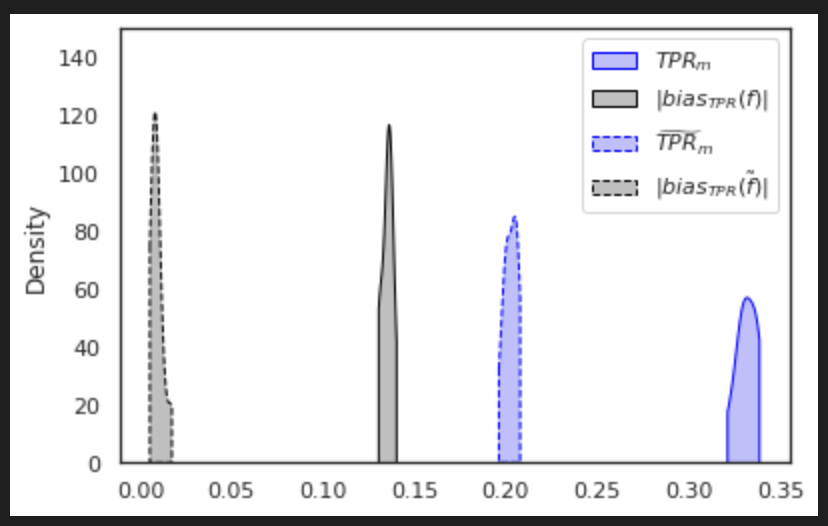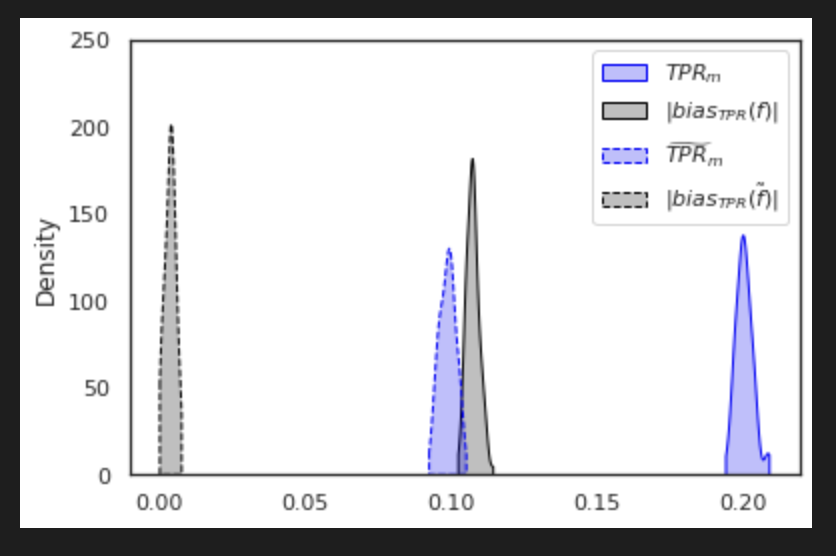Responsible ML
Interpretable and fair machine
learning models


Jeremias Sulam
Responsible ML
-
Reproducibility
-
Practical Accuracy
-
Explainability
-
Fairness
-
Privacy
-
Explainability
-
Fairness
[M. E. Kaminski, 2019]
E.U.: “right to an explanation” of decisions made
on individuals by algorithms
[FDA Guiding principles]
F.D.A.: “interpretability of the model outputs”


Explanations in ML

- What parts of the image are important for this prediction?
- What are the subsets of the input so that

-
Sensitivity or Gradient-based perturbations
-
Shapley coefficients
-
Variational formulations
LIME [Ribeiro et al, '16], CAM [Zhou et al, '16], Grad-CAM [Selvaraju et al, '17]
Shap [Lundberg & Lee, '17], ...
RDE [Macdonald et al, '19], ...

-
Adebayo et al, Sanity checks for saliency maps, 2018
-
Ghorbani et al, Interpretation of neural networks is fragile, 2019
-
Shah et al, Do input gradients highlight discriminative features? 2021
-
Sensitivity or Gradient-based perturbations
-
Shapley coefficients
-
Variational formulations
Explanations in ML
Shapley Value

- efficiency
- nullity
- symmetry
Let be an -person cooperative game with characteristic function
- exponential complexity
Lloyd S Shapley. A value for n-person games. Contributions to the Theory of Games, 2(28):307–317, 1953.
How important is each player for the outcome of the game?
marginal contribution of player i with coalition S
Shap-Explanations
inputs
responses
Scott Lundberg and Su-In Lee. A Unified Approach to Interpreting Model Predictions, NeurIPS , 2017
Needs of approximations, largely ad-hoc

predictor
h-Shap: fast hierarchical games

We focus on data with certain structure:



Example:
if contains a cross
Theorem 1 (informal):
- h-Shap runs in
- Under A1, h-Shap -> Shapley




h-Shap: fast hierarchical games


h-Shap: fast hierarchical games


h-Shap: fast hierarchical games

Fast hierarchical games for image explanations,
Teneggi, Luster & Sulam,
IEEE Transactions on Pattern Analysis and Machine Intelligence, 2022


Jacopo T.
JHU
Alex L.
EPFL
From Shapley back to Pearson
You are telling me that pixels play games?
Formal Feature Importance
[Candes et al, 2018]


There exists a procedure that tests for this null and returns a valid p-value,
Local Feature Importance
Lemma:
From Shapley back to Pearson

Theorem 2 (informal):
Large values imply importance in a statistical sense:
Given the Shapley coefficient of any feature
Then
and the p-value obtained for , i.e. ,
From Shapley back to Pearson: Hypothesis Testing via the Shapley Value
J Teneggi, B Bharti, Y Romano, J Sulam
arXiv preprint arXiv:2207.07038


Beepul B.
JHU

Yaniv R.
Technion
Jacopo T.
JHU
What does the Shap Value test for?
Theorem 3 (informal):
Given the Shapley value for the i-th feature, and
Then, under , is a valid p-value and
From Shapley back to Pearson

Partial summary
-
Shapley values are popular among practitioners because of their "theoretical (game theoretic) foundations"
-
Despite their exponential computational advantage, one can often leverage structure in the data to compute or approximate these efficiently
-
Unbeknownst to users, these coefficients do convey statistical meaning with controlled Type I error
Fairness in ML






Formal Fairness in ML
Demographic Parity
prediction should not be correlated with the protected attribute
TPR should be equal for both groups
Equal Opportunity
Equalized Odds
TPR and FPR should be equal for both groups
Estimating (and controlling) bias requires a dataset
What if we only have ?!
(TPRs)

Formal Fairness in ML
(estimated bias)
Solution?
-
Gupta et al., Proxy fairness, 2018
-
Prost et al., Measuring model fairness under noisy covariates, 2021.
-
Kallus et al., Assessing algorithmic fairness with unobserved protected class using data combination, 2022
-
Awasthi et al., Evaluating fairness of machine learning models under uncertain and incomplete information, 2021.
Fair Predictors with inaccurate sensitive attributes
Assumption 2:
e.g. if h and f use features that are conditionally independent
* only needs the base rates
Can I make
Theorem 4:
Under Assumption 2,
where k is an analytical function of the error of h and the base rates
Controlling for Fairness with predicted attributes
Theorem 5:
Algorithm (informal)
Experiments



Experiments
FIFA 20 Data set
A : nationality = {Argentina,England}
Y : salary = {above of median, below of median}
X : player features = {quality score, name}


Experiments




Estimating and Controlling for Fairness via Sensitive Attribute Predictors
B Bharti, P Yi, J Sulam
arXiv preprint arXiv:2207.12497

Beepul B.
JHU
Paul Yi
UMD



Final Thoughts
-
Fairness can be estimated and controlled for even when data is not fully observable
-
Huge opportunity for development of methods to rigorously enforce Responsible Constraints in machine learning predictors